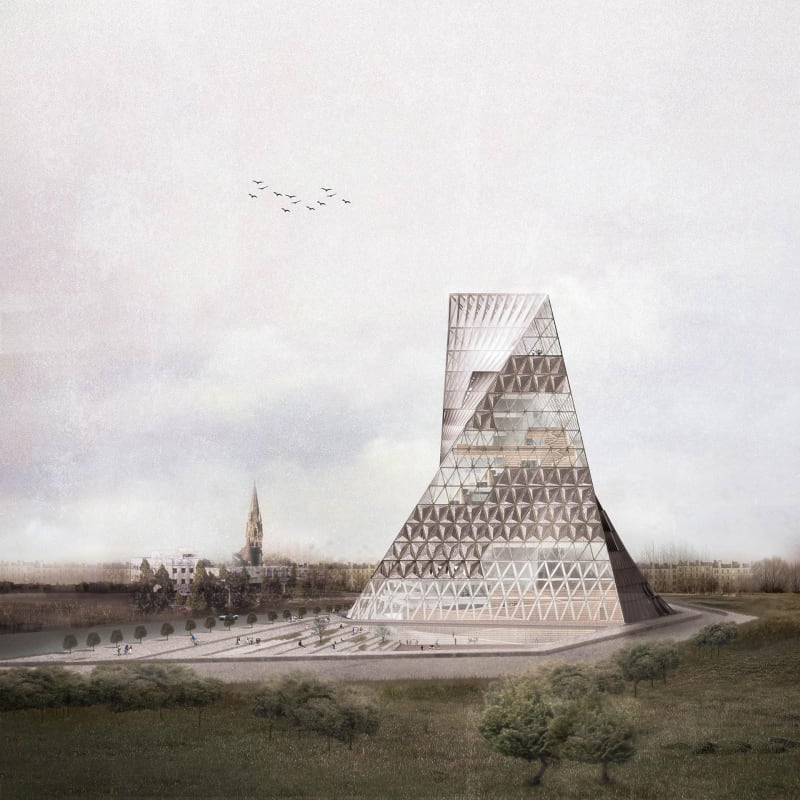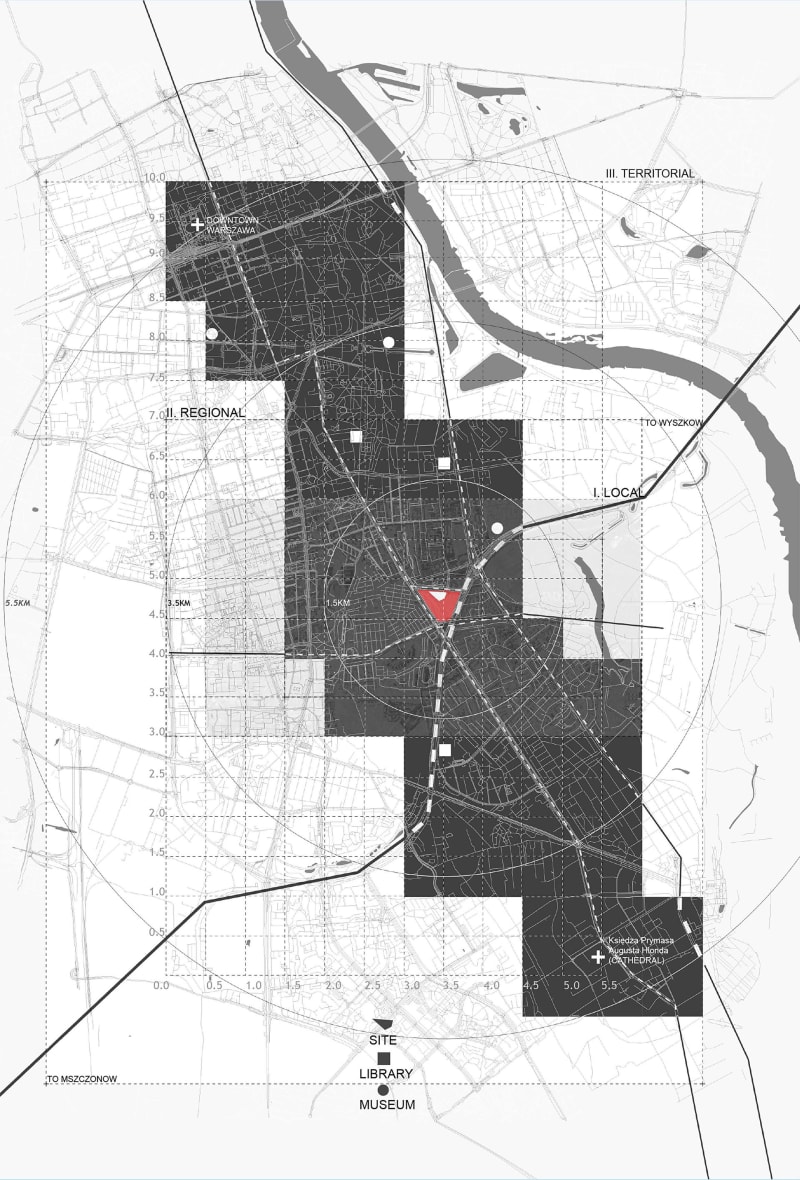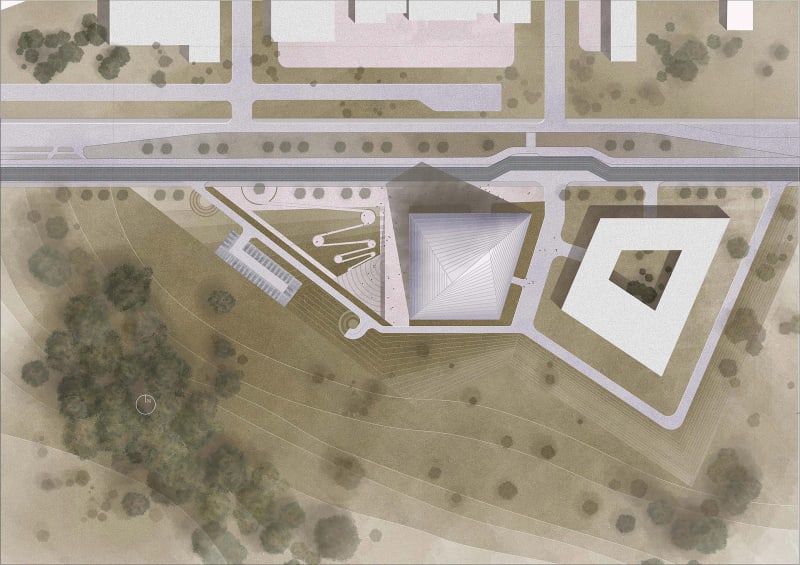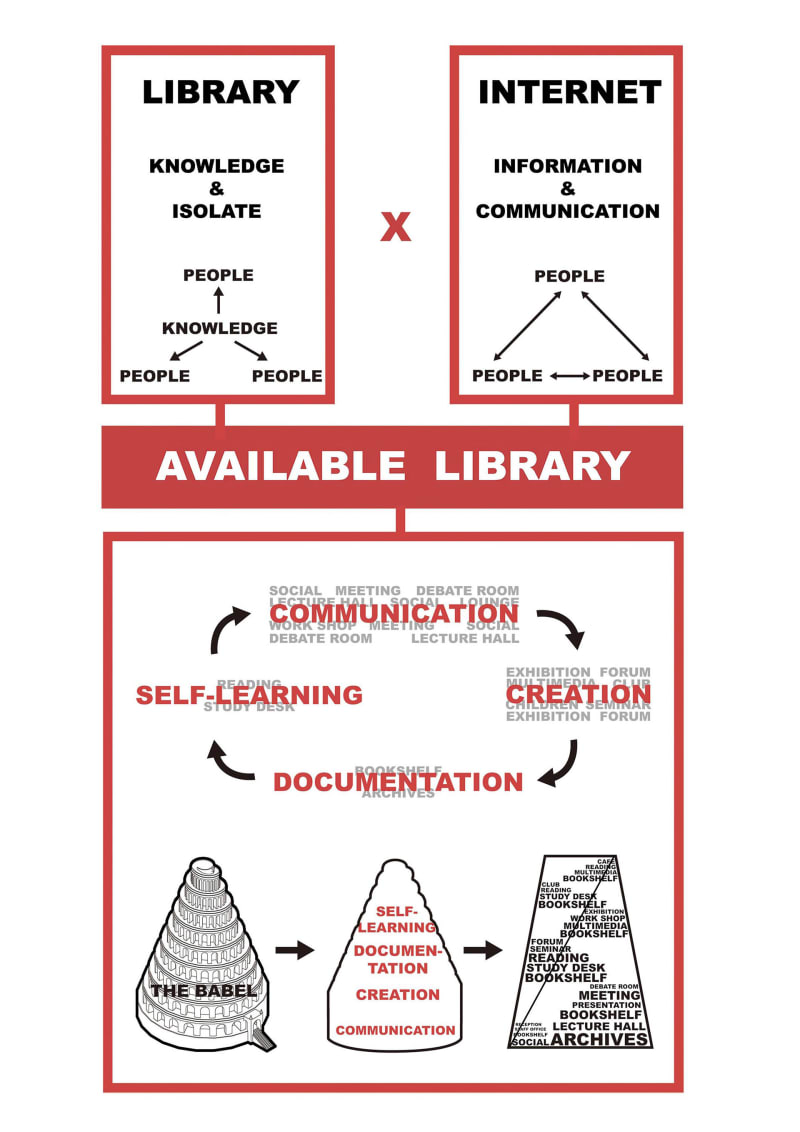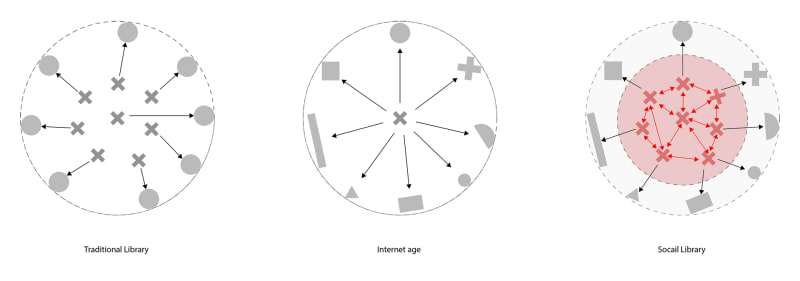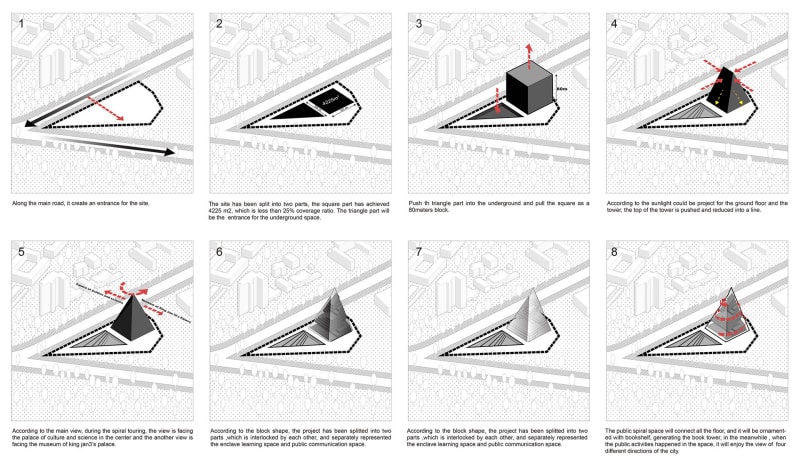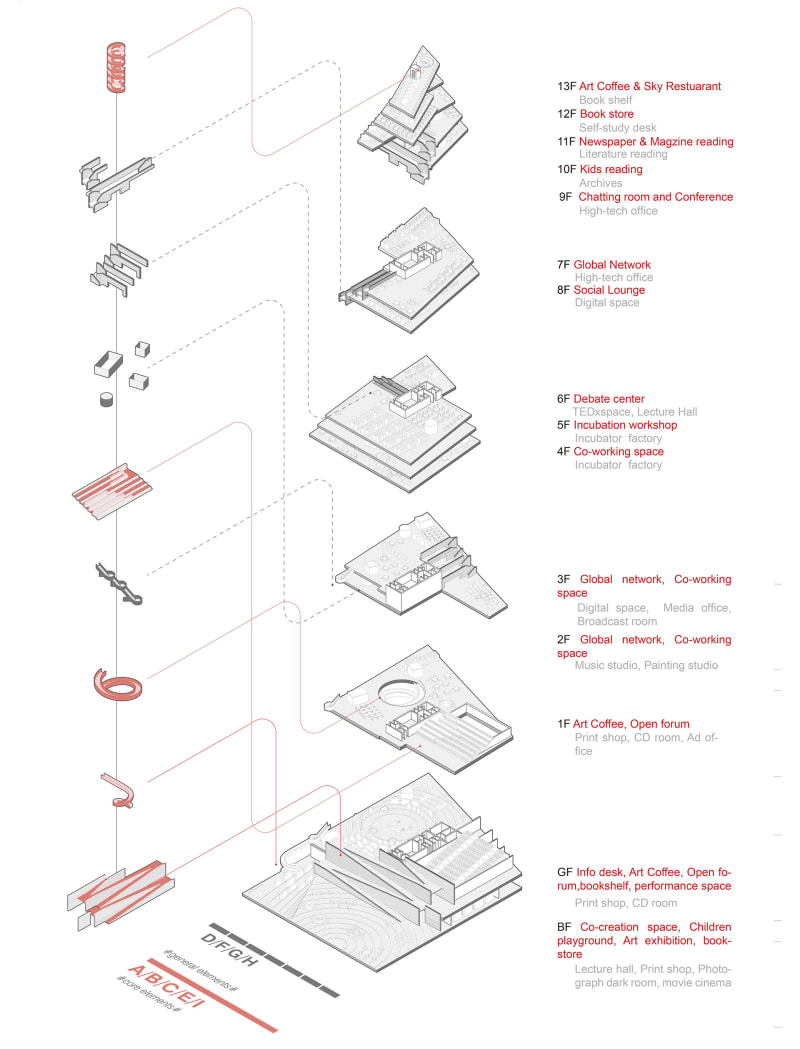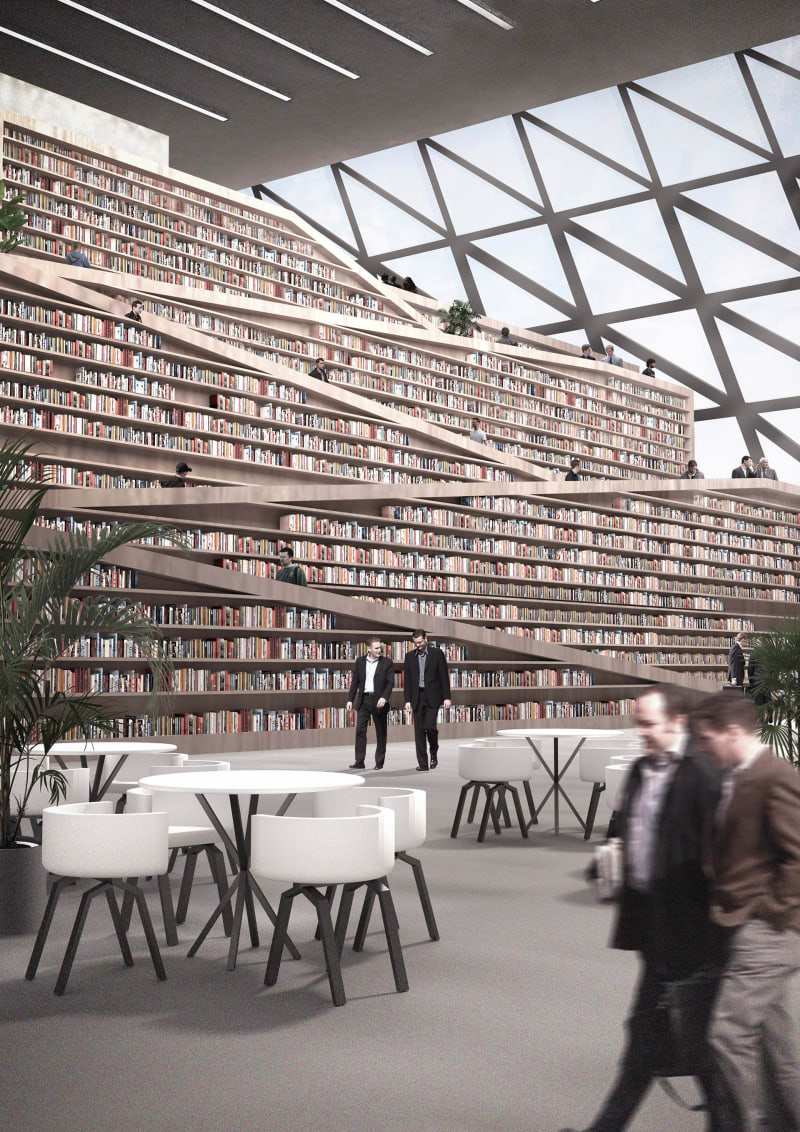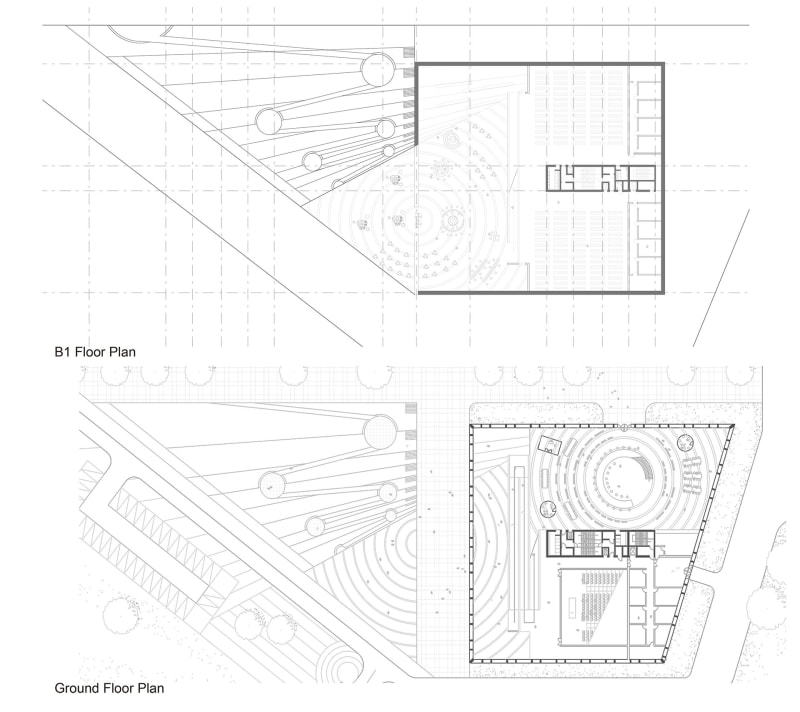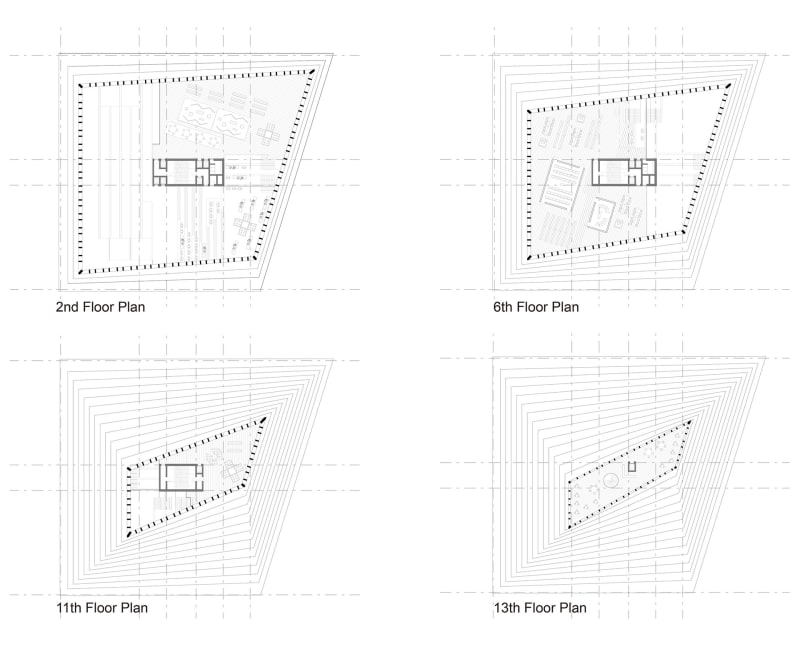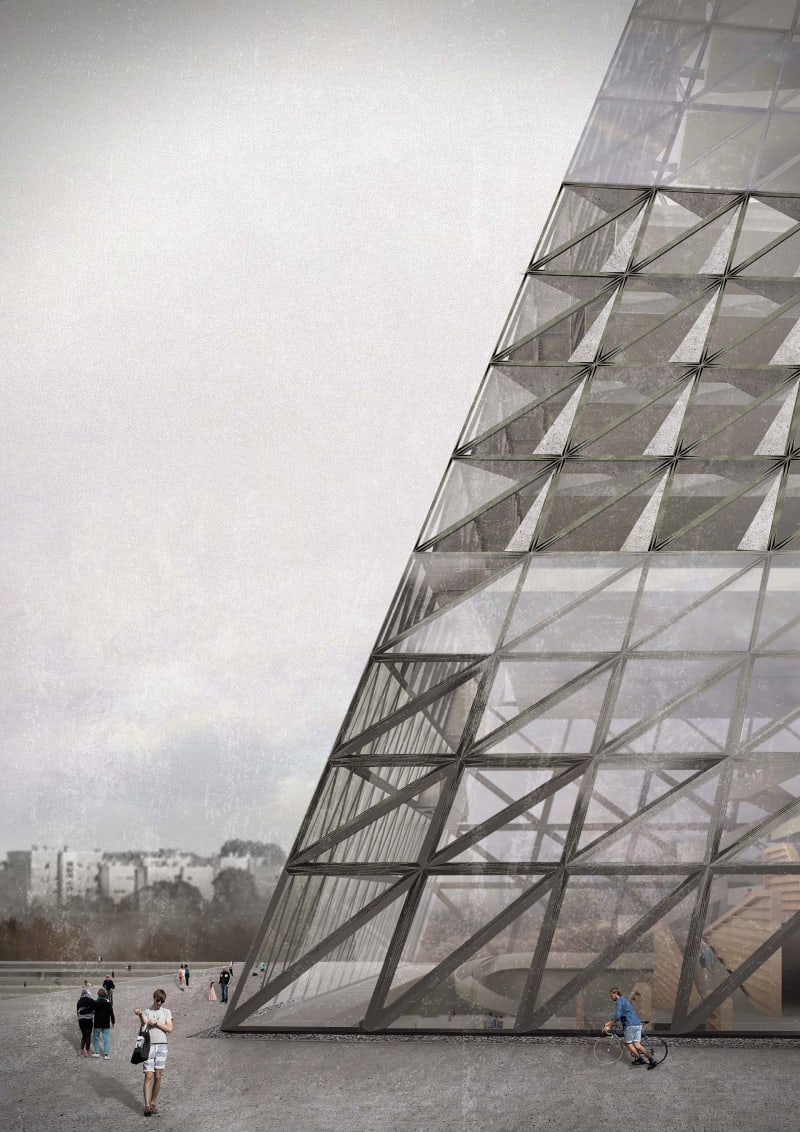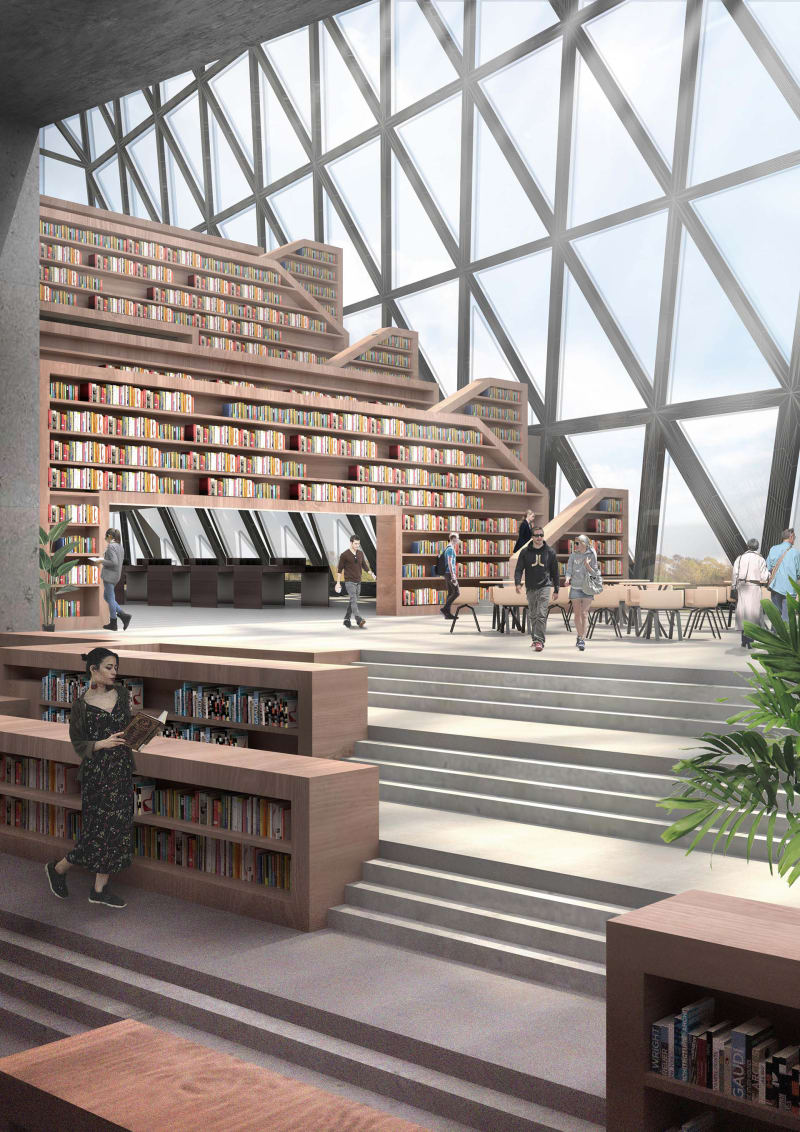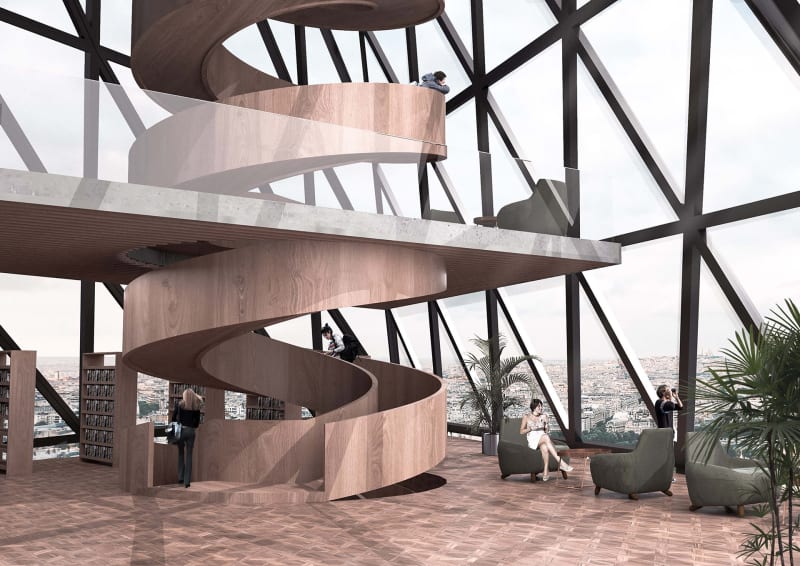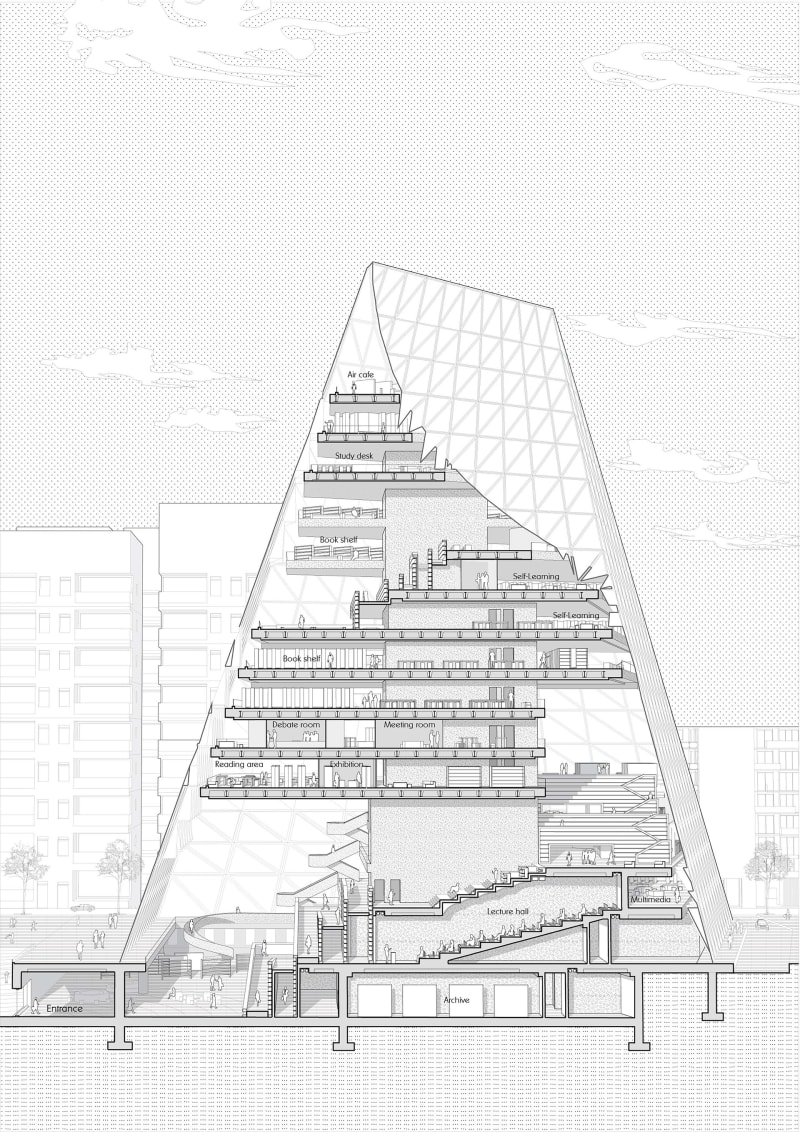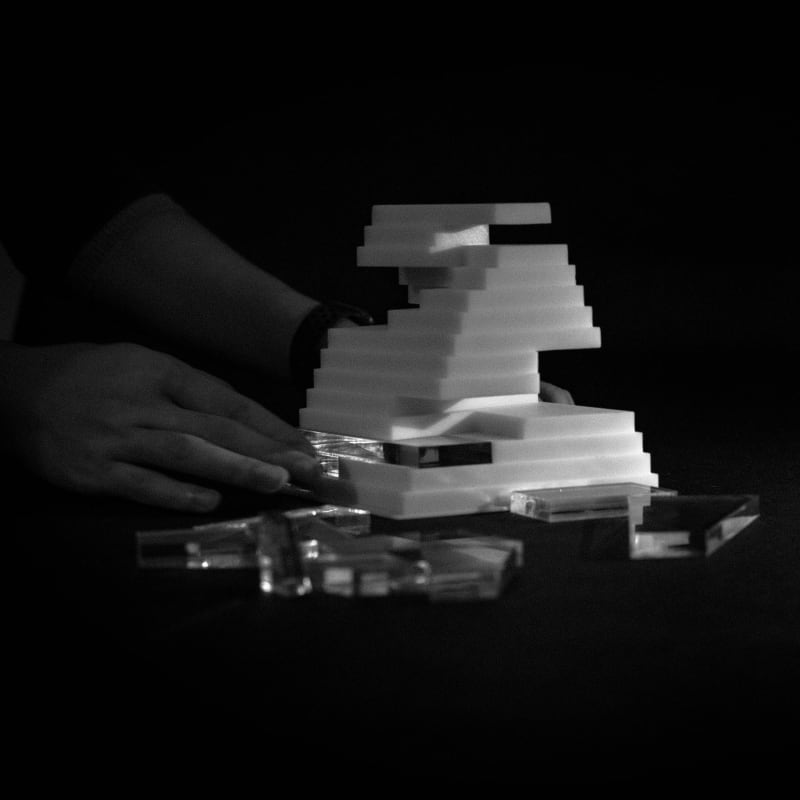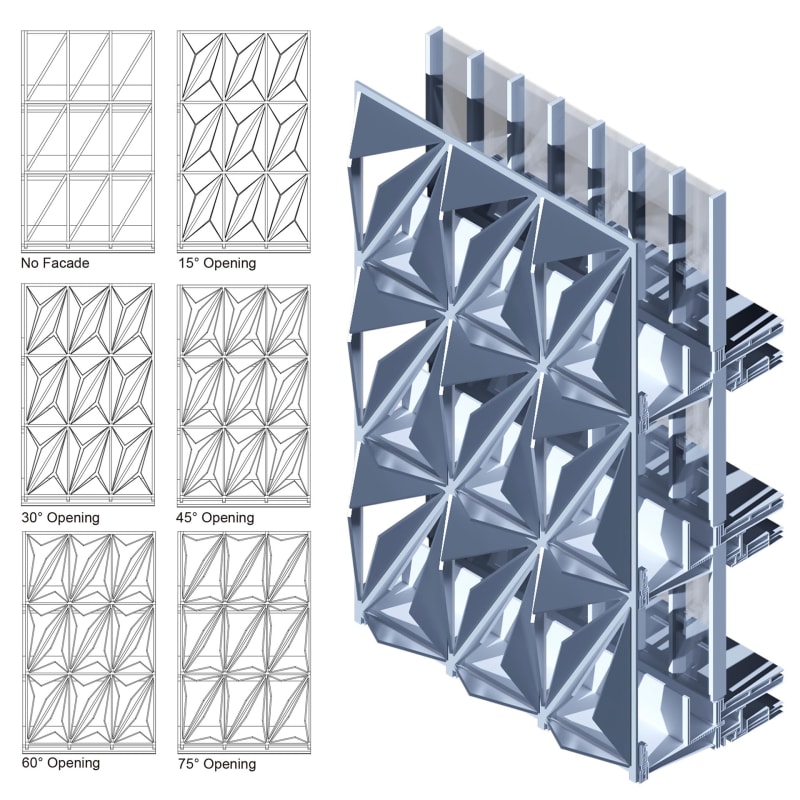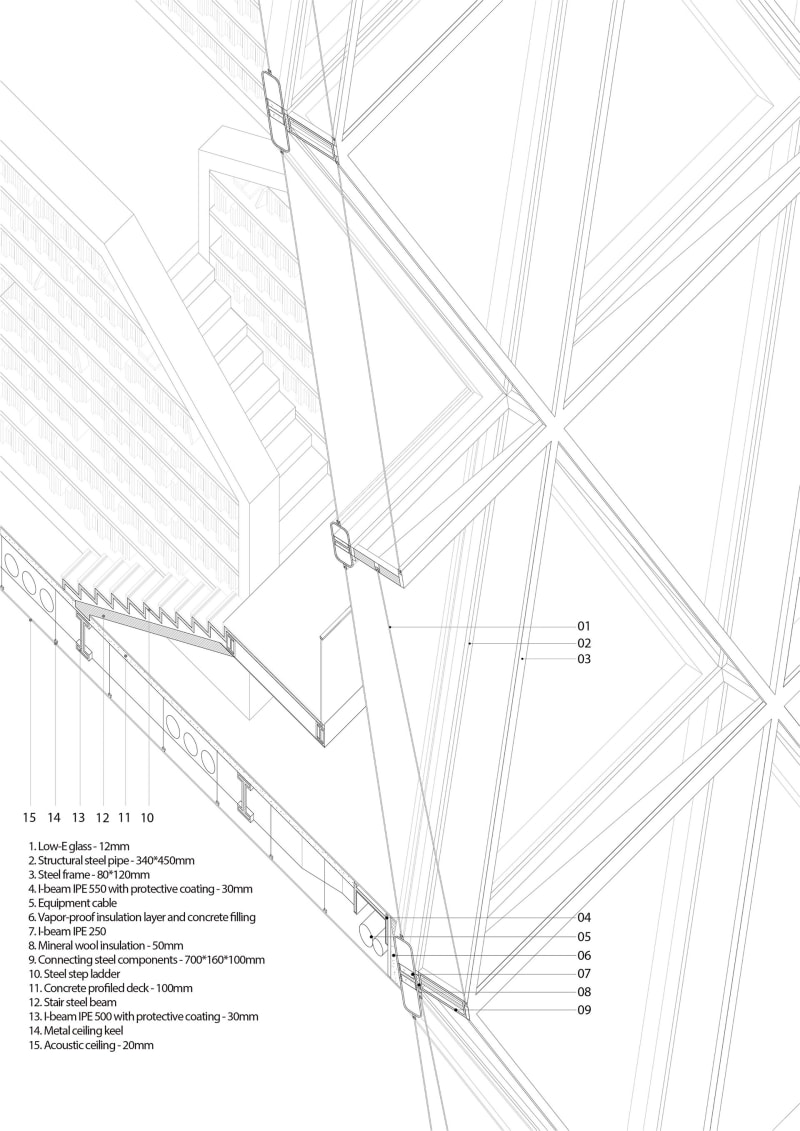JOA’s recently first-prize winning project of the competition “Libgen: Towards a new class of evolutionary libraries” introduced a new library in Warsaw, reveals another form of library in contemporary society and the future. Warsaw is a significant center of research and development. The new library will serve regionally, juxtaposing to the library of Warsaw University, specific in rendering the incubation system, supporting in communication, providing intellectual workforce and technological innovation. We create a social platform for learning and studying, welcoming all levels of participants.
The creation of the library was initiated with the need of documenting history and knowledge. In a traditional library, books are the main element that serves as the medium of self-learning, preserving history, fiction, art, and science. And learning method becomes mono-direction to link with the only source. In ancient ages, the library was a part of a sacred temple, an administrative, or a royal archive. While during the Roman period, libraries began to offer not only books but also lectures and gatherings in the hall or garden. By the 18th century, Boullee executed the library as the first architectural treatise to focus exclusively on public monuments. This kind of public monument also shares architectural language based on the composition of anonymous and simple geometrical volumes. The library is a monument to “science”. And what should be the next generation?
More recently, the internet breaks down the old formula. The public is transferred when we could choose a faster approach to get information. Meanwhile, the information also becomes diverse and massive. It accommodated other public facilities on demand and began acting as a social responsibility within modern society itself.
Actually, Warsaw has the largest collection of towers in Europe. 64% of them are office, the rest are residential or mix-used, while there is a lack of culture program. Since the failure of the Babel Tower articulates the importance of communication and cooperation, which in our opinion are also essential qualities of the new generation of library as a cultural symbol.
The new generation of library shall stimulate the communication of the public. The source shall be more diverse and interlaced. The spatial zones to acquire knowledge is yet to receive an update on a larger scale. The library has in a way become a public demand. Everybody with the knowledge to share could perform in the space, and open to the public. The new role of the library shall be a city’s vital think tank.
The main body of the library is formed by stacking layers of book walls rotating upward, providing the most basic services as a library. In the meantime, as the city’s think tank, the program of its public space has been defined by social structure, infilling with local activities. In order to contain interaction and incubation as wide as possible, there are three vital zones. Each zone contains an enclave, which can be a photograph darkroom, a print shop, a music hall, etc, as well as juxtaposes a public domain for social interaction and spontaneous learning activities. The three zones are:
CREATION SPACE: It attracts people with specific interests, such as photography, music, art crafts, etc. They are informal spots insert into the public domain, organized according to schedule and workshop.
COMMUNICATION SAPCE: It focuses on lectures, media publications, and advanced innovation industries. This section provides a series of co-working spaces, set up with the interface for the new intelligent with new ideas.
SELF-STUDY SPACE: The top-floor section is defined as a self-study space with the archive, combining with a viewing platform and a cafe.

